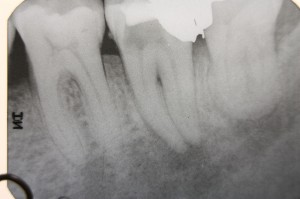Hey Dr. Zoomie – I’ve heard that kids are much more sensitive to radiation than adults are. Should I worry about taking my kids to the dentist or the doctor?

When my younger son was about two years old he broke out in big red splotches and then started having some trouble breathing. My wife and I rushed him to the hospital and they decided that an x-ray was needed. As they were prepping him the technologist started explaining the risks of x-rays to me – after a few minutes I cut him off, explained that I was a radiation safety professional and fully understood the risks, and told them to go ahead and take the x-rays. Luckily there were no serious problems and he recovered over the next week. My thinking was that the radiation dose from an x-ray is low – not much more than taking a cross-country plane flight – and the risks were somewhere between very low and nothing; in exchange for gaining valuable diagnostic information. On the other hand, even if there was a long-term risk from the radiation, that would lie many years – even a few decades – in the future. Not breathing, on the other hand, can be immediately dangerous – my feeling was that it was a good idea to make sure my son didn’t have any problems that were immediately life-threatening. Any risks that the radiation might pose wouldn’t show up (if at all) for 20 or 30 years.
The bottom line is that medical x-rays (including dental x-rays) don’t give a very high radiation dose – at most, a few tens of millirem (fluoroscopy and CT scans are higher-dose procedures; let’s get back to them in a minute). And if we dig into the radiation biology we find that the health risks from a low dose of radiation is incredibly low – about as close to zero as you can get. At the same time, we also have to consider the risk from a doctor (or dentist) not having the diagnostic information they think they need – if the risk of missing this information is higher than the risk from the radiation then there’s a good case to be made for taking the x-ray.
There are some procedures that expose us to a higher radiation dose – CT scans are one and fluoroscopy is another.
A single CT scan exposes a person to about as much radiation as 100 x-rays (give or take a bit). This sounds like a lot – and it’s not a trivial radiation dose – it’s about as much as we get from nature in a few years. But even here the risk of getting cancer is really low. How low? According to one calculation it’s about one twentieth of one percent – which means that there’s a 99.95% chance that nothing will happen. And in reality the risk might be even lower – we don’t know for sure exactly how low the risk is, but we know that it’s no higher than 0.05%, which is about twenty times safer than driving. And if you look at the risks of other options – watchful waiting or exploratory surgery – the risks from a CT scan that will provide medically necessary information seem to be pretty reasonable. At least they seemed reasonable to me when I had to make this same decision for another child several years later.
The bottom line is that if we’re going to decide the right thing to do we have to keep in mind all of the risks – and we have to think about the real risks of the diagnostic radiation as opposed to what we fear might be the case. And, while we don’t want to use medical x-rays when they’re not called for (and we still want to do what we can to reduce radiation dose whenever possible), we have to remember that they provide information that often can’t be gained in any other manner – to see inside the body we only have two choices; using some form of radiation or cutting into the body. Surely we can all agree that x-rays are better than scalpels.